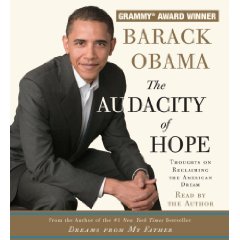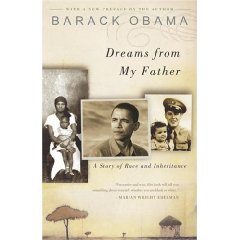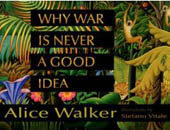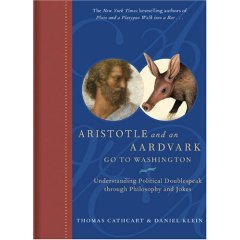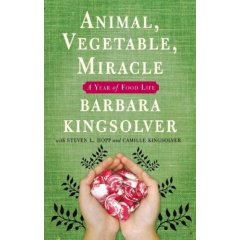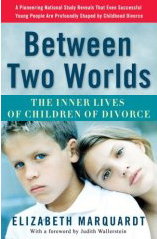
Between Two Worlds
The Inner Lives of Children of Divorce
by Elizabeth Marquardt
Reviewed September 11, 2007.
Crown Publishers, New York, 2005. 249 pages.
Starred Review.Between Two Worlds is a book written by a researcher whose parents were divorced when she was a child. She attempts here to give the story of divorce from the perspective of the children involved, for a change.
She didn’t rely on her own experience, but conducted an extensive study of well-functioning children of divorce. Previous studies have tended to focus on children who don’t cope well. What about the resilient children? What about “good divorces”? Are those children, in fact, just fine with the divorce?
Early on, the author explains that she is not saying that no one should ever get divorced. She says,
One major national study has turned up an important finding that helps clarify the question of when divorce is necessary. The researchers found that one-third of divorces end high-conflict marriages, in which the parents report physical abuse or serious and frequent quarreling. Not surprisingly, the children do better after these high-conflict marriages end. However, two-thirds of divorces end low-conflict marriages, in which the parents divorce because they are unhappy or unfulfilled, or have other problems that are not seriously threatening. The children of low-conflict couples fare worse after divorce because the divorce marks their first exposure to a serious problem. One day, without much warning, their world just falls apart.
Only recently have we had a large percentage of adults who have grown up in divorced homes. Elizabeth Marquardt feels that it’s time to talk about divorce from the children’s perspective—not guessing what the children feel, but asking them.
The individual stories of children of divorce point to the lingering loss and pain that result from divorce even when the children look “fine.” The long-term studies point to some of the obvious and troubling differences we possess as a group. But no one has stepped back and explained how divorce changes childhood itself. The new study reported in this book explains how divorce reshuffles many core features of middle-class childhood that our society takes for granted and, in the process, shapes children’s identities well into young adulthood.
This larger story must be told because, as a society, we still have not grasped just how radical divorce really is. Too many people imagine that modern divorce has become just a variation of ordinary family life, like growing up in a large family, perhaps, or in a military family that moves a lot. Sure, there may be some discomfort, and some of the kids may end up with big problems, but doesn’t childhood as we know it stay basically the same? Most people assume the answer is yes.
They are wrong. In reality, divorce powerfully changes the structure of childhood itself.
She doesn’t like the popular notion of a “good divorce.” She says,
The idea of the “good divorce” is attractive to many. Some divorced parents are reassured because it suggests steps they can take to try to protect their children if they must end a very bad marriage. Other parents like the idea of a “good divorce” because it suggests they can end a marriage that may be okay but not completely satisfying and still do right by their children. Family court judges welcome it because they want to make arrangements that, whenever possible, keep both parents in the child’s life, and they want to minimize conflict between those parents. Some therapists like the idea because they want to help these families and a “good divorce” gives them a role in teaching parents how to divorce. In addition, many social observers, including journalists, academics, and opinion leaders, like the idea of a “good divorce” because it promises to alleviate much of the anxiety our society has about divorce. What really matters, the experts assure us, is how the parents get along after the divorce, not the divorce itself.
The premise of the “good divorce” sounds logical. Surely, if divorce does happen, it is better for children not to lose significant relationships entirely, nor to be drawn into bitter, unending fights. However, when you talk to the children themselves you find that the popular idea behind the “good divorce”—that the quality of the divorce matters more than the divorce itself—is actually an adult-centered vision that does not reflect their true experiences.
While a “good divorce” is better than a bad divorce, it is still not good. For no matter how amicable divorced parents might be and how much they each love and care for the child, their willingness to do these things does absolutely nothing to diminish the radical restructuring of the child’s universe.
As the author goes on to point out specific difficulties, she explains why the very structure of divorce pulls children between two worlds.
A primary challenge of marriage is for two separate people to become one couple, to reconcile their needs and experiences in ways that allow them to care for each other and to avoid unnecessary strife. Couples wish to meet this challenge even if they do not have children because they know they will both be happier if they can live together in relative harmony. But the stakes are higher when they have children, because now they are raising a new person who will be strongly shaped by the environment they create.
When married parents are successful in their attempts at bringing together their two worlds the results are apparent as they resolve differences, back each other up in front of the child, or try to understand and adapt to each other’s quirks. When they are less successful their attempts at making sense of their different ways of living may be expressed by fighting, criticizing the other parent in front of the child, or trying to change each other’s irritating habits. Yet however well or poorly they handle the challenge of negotiating their differences, an important but often ignored feature of married life is this: The work of making sense of their two worlds is the parents’ job, not the child’s.
Everyone agrees that only bad parents would tell a young child “I think you should do this, but you father thinks you should do that. So you decide.” When parents disagree they are expected to confront each other about it. Whether they confront each other behind the scenes or in front of the child, with hostility or with dignity, is very important, but it is not the only important issue. What is equally important is that it is the parents’ job to bridge their differences; even if they do their work badly no one would say that their child should attempt the job instead. Our society pins the success or failure of family conflict resolution squarely on the parents.
Making sense of two ways of life is an active experience for married couples. They have to work at it and some couples do it better than others. But even when couples are angry and avoiding each other—not actively bridging their differences or openly conflicting—the simple fact of the marriage holds them together and remains larger than the differences that divide them.
The unifying quality of being married is difficult to see, but it is a constant undercurrent in the life of a married couple. It is the background music between the fight scenes, the subtle strains that we don’t hear until someone points them out to us…. Even when they are angry and avoiding each other, they still live in the same home and continue to share an identity as a married couple. Even when they don’t particularly feel “married,” they’re still married. Despite their differences they are still a unit in the child’s eyes—“parents”—and dealing with the conflicts between their worlds, however well or poorly they do it, is still their job.
Moreover, to focus on conflict and unhappiness to this extent is really to overstate the problem. Every married couple has conflicts but only some of them have very serious, ongoing conflicts that threaten their or their children’s well-being. Divorce is an important option for these couples. For most married couples, however, the real need is to learn how to handle conflict better. In most marriages, the overriding achievement is the ever-unfolding, never-perfect, but nevertheless critical knitting together of two worlds into one marriage and one family life.
Much of this process, while subtle, appears in intact families to be natural and therefore unremarkable. Of course married parents attempt to give their child one family and way of life. Of course most children, especially when they are young, see their parents as a unit with largely similar beliefs and expectations. This is the most basic stuff of family life, after all.
Except, for many children today, these basic features of family life cannot be taken for granted.
Even when parents have a so-called “good divorce,” “they are no longer trying to make sense of the differences between their two different worlds.”
It is at this point that the experts fall silent. There is a widespread assumption in our society that if parents manage to minimize conflict after the divorce, they will create something like an intact family for their children, because the children will still have a mom and a dad in their lives. This assumption is wrong. In fact, the postdivorce family, no matter what the level of conflict, is an entirely new kind of family that lacks many features of intact family life that might seem natural and unremarkable.
At times these parents may conflict, but if they are seeking to minimize disputes they do so largely by staying out of each other’s way. Observers may see an admirable absence of conflict, but from the child’s point of view what these divorced parents have achieved is the creation of two separate worlds for their child to grow up in. It is certainly better for the child if there is little open conflict between the parents rather than a lot. A high degree of conflict reinforces the division between the two worlds and creates additional pain. But a mere absence of conflict between divorced parents can never begin to knit their worlds together in the way that being married does.
This was the overarching concept that gives the book its name, and it came up again and again in the surveys and interviews of the study.
Divorced parents stay out of each other’s worlds, retreating to their own worlds. Where does the child stand? As children, we became travelers between their worlds. Sometimes we stood in one world, sometimes in the other, but in our own minds most often we were suspended uncomfortably somewhere in between. We were like the football I imagined myself to be as a child, hurtling between my two parents. When they divorced, our parents successfully separated their two identities. But we remained the bridge between them, seeking to make sense of two increasingly different ways of living as we forged identities of our own. In other words, after a divorce the task that once belonged to the parents—to make sense of their different worlds—becomes the child’s.
You don’t necessarily see the conflict in the heart of a child of divorce.
To outside observers, the children of divorced parents may look no different than the children of intact parents. We ran on the playground, went to school, argued with our siblings, played with blocks, drew pictures in our bedrooms. But we were also vigilant. When Mom came home we gauged her mood. When we stayed at Dad’s we were often quiet and on good behavior. We paid close attention to the different rules at each parent’s home and the conflicts in their expectations of us. We wondered if we looked or acted too much like our father and if that made our mother mad at us. We struggled to remember what we were not supposed to say, what secrets or information about one parent we should not share with the other. We adjusted ourselves to each of our parents, shaping our habits and beliefs to mimic theirs when we were around them. We often felt like a different person with each of our parents.
Our parents may no longer have been in conflict, but the conflict between their worlds was still alive. Yet instead of being in the open, visible to outsiders, the conflict between their worlds migrated and took root within us. When we sought our own identities—when we asked “Who am I?”—we were confronted with two wholly separate ways of living. Any answer we gleaned from one world could be undermined by looking at the other. Being too much like Dad could threaten the Mom-self inside us, and vice versa. These conflicts were not raised in conversation with or between our parents, or with anybody else, but internally. We were one in our bodies but we did not feel one inside. Even the “good divorce” left us struggling with divided selves.
She points out that people don’t want to hear what children of divorce really go through.
You will find only a few books on divorced families, at least in proportion to the number of divorced families in this country, and most of them are upbeat guides on how to divorce rather than in-depth looks at the lives of children of divorce. Strangely, our culture seems only too happy to talk about dysfunctional intact families—to point fingers at all the ways married parents can mess up with their children—but it falls silent about divorce because no one wants to make divorced parents feel bad. Some people might even get the erroneous impression that the average divorced family is better for children than the average intact family, whose problems are so often bared to the world.
She summarizes the way the life in two worlds affects kids:
Our study showed that children of divorce, even those who appear to be fine and successful later in life, are much more likely than their peers from intact families to share profound and moving stories of confusion, isolation, and suffering. Most people do not expect children to be deeply absorbed by their parents’ needs and vulnerabilities, but children of divorce often say we were. Most people do not expect children to confront complex moral questions early in life, but as children of divorce we routinely did. Most do not expect children to feel like outsiders in their homes, but we often felt that way. Most do not expect children to keep secrets from their parents, but we often did. Likewise, most do not expect that children will approach God from a place of suffering and isolation, but that is how we often explain our spiritual journeys. Most do not expect children to feel like a different person with each of their parents, yet children of divorce are likely to say we did.
When our parents divorced we did not just suffer a bump, leaving us with a few bruises that quickly faded. Our childhoods were turned inside out in ways that have been largely secret and silent—until now.
The rest of the book goes into details about these issues, tells stories from people who were interviewed, and explores the repercussions in kids of being pulled between two worlds.
Her next-to-last chapter is titled, “Getting Honest About Children of Divorce.” Here, she gets personal. She says,
I’ll admit that at the beginning of this journey I was angry. I was tired of all the wrongheaded assumptions about my life. Too many people thought that because my parents loved me and didn’t fight, or because their divorce took place before I could remember it, or because I had managed to grow up and become a reasonably functional person, then the divorce must not have been a big deal. I felt that my parents and the culture at large had very little understanding of my real experience.
I still sometimes get frustrated with my parents, as anyone does, but I don’t feel angry with them anymore. The decision they made was a very long time ago, when they were only twenty-one years old. When they split up, leading experts assured parents that as long as they found happiness their children would be happy too. Some experts even insisted that parents in unhappy marriages had a duty to divorce or they would irrevocably damage their children. More nuanced ideas about happiness—that there are degrees of unhappiness in marriages, that marital happiness can go in cycles, that divorce doesn’t necessarily make adults happy, that children’s natural inclination is not to worry about their parents’ happiness so much as their own—did not have much influence in the early seventies….
But I am still angry at the culture. It’s five years and counting into the new millennium. We’ve seen the effects of widespread divorce unfold for over three decades. Some big studies have been done and the first generation of children of divorce has grown up and started to speak out. Yet in the debate about divorce, our culture is still turning its back on children. For the generation who raised us and for divorced parents today, the story told in this book is a new one.
She says,
Upbeat language about divorce—call it “divorce happy talk”—is all around us. Such talk can be well-intended. Divorced parents are vulnerable and worried about their kids. Experts want to offer them reassurance and helpful advice. But when divorce happy talk minimizes, distorts, or ignores the pain felt by children of divorce, it crosses over into the realm of harm.
These glib, overly optimistic assumptions about divorce hurt my generation as we grew up and they are harming a new generation growing up now. My question is this: Can our culture get honest about children of divorce?
In the end, divorce happy talk indicts itself. In the breathless portrayals of the upside of divorce, it is all too easy to spot a defensive awareness of the huge downsides. If they’re honest, everyone knows that divorce hurts a lot. Even people who want to end their marriages find divorce wrenching and disorienting. Divorce routinely makes it to the top of the list of life’s most stressful events that are likely to send a person spiraling into depression.
Yet few other events on the list inspire the endless books, magazine articles, websites, and talk shows devoted to looking at their upside. Why? Because unlike losing your job, or having your spouse die, or facing serious health problems, divorce is a choice that at least one adult in the marriage makes. Divorce happy talk is our culture’s attempt to reconcile two competing desires: the desire to accept widespread divorce and the desire to raise happy, healthy children. These two desires are in direct conflict. To date, the culture’s main way of confronting this conflict has been denial in the form of happy talk.
Happy talk misleads adults about the true nature of divorce. It portrays divorce as an orderly, perhaps even plannable event rather than a major upset that opens new, unexpected, and unwelcome doors. It minimizes the pain and chaos that often follow divorce and, in doing so, encourages parents who may be in troubled by salvageable marriages to split up.
The most serious problem with divorce happy talk is that it lies to children. Children of divorce typically experience painful losses, moral confusion, spiritual suffering, strained or broken relationships, and higher rates of all kinds of social problems. But divorce happy talk insists that children’s experience is just the opposite. It declares that postdivorce family life is a fun challenge. It chirps about the new people who become part of one’s family, the fresh unity of remarriages, the adventure of traveling between two worlds. When divorce happy talk does realistically confront the stresses of divorce, it pretends that just saying them out loud will make the pain go away. Either way, the misnaming of our actual experience makes it even more difficult to recognize and share our true feelings and eventually to heal.
She points out that the standards for children of divorced parents and married parents are very different.
How often do married parents send their child away from home for days, weeks, months, or years at a time? How often do married parents spend routine, non-work-related nights apart from their kids? How often do married parents put their children on an airplane by themselves? How often do married parents divide their financial responsibilities for their children down to the penny? How often do married parents take each other to court? How often do married parents sleep with someone besides the child’s parent in the house when the child is present? How often do married parents read their children books that portray painful losses that the children might have experienced as fun adventures?
Certainly, married parents do not avoid doing all of these things, and divorced parents do not do all of them. But these actions are common among divorced parents, so common that no one thinks twice about them. It is almost unheard of for married parents to do any of them.
Yet the needs of children of married parents and children of divorced parents are the same. They are the same species. So why are children of divorce considered so resilient? Because the adults need them to be that way.
In her concluding chapter, Elizabeth Marquardt gives us what she believes is the truth about children of divorce:
Some of us, many more than those from intact families, struggle with serious problems…. Yet those who are visibly suffering are not the entire story. They’re the tip of the iceberg. The others, the ones without seriously disabling problems, are everywhere—at your workplace, at school, at church. We don’t look much different from anyone else. We might seem a bit more guarded, a bit slower to make new friends, a bit more anxious about life in general. But we do manage to make friends, fall in love, accomplish goals, succeed at work; some of us do quite well.
If you ask about our lives, though, you’ll discover that our parents’ divorce is central to the story of our childhoods and to who we are today. We grew up too soon. We were not sure where we belonged. We often missed our parents terribly when we were not with them. Some of us longed to be like our parents and yet agonized if we resembled one of them too closely. We had to figure out things for ourselves—what is right and wrong, what to believe, whether there is a God. We never knew we could ask for help if we needed it. When we faced struggles, we thought it was up to us alone to make sense of I, because the silence about our childhoods seemed to leave us little other choice.
Those of us who successful have more in common with the visibly suffering children of divorce than you might think. The fact that we managed to come through it, get jobs, maybe go to college and build careers—these accomplishments do not necessarily imply that our parents handled the divorce better than others. Some children survive devastating experiences and ultimately become stronger for it. Others are broken by the same crises and remain tormented. To look at any of us who survived childhood divorce and conclude that our childhood and the divorce itself must have been “fine” shows little understanding of the enormous losses in our lives or of the capacity of the human spirit to survive and flourish despite adversity.
Those of us who are children of divorce are not all falling apart, but neither are we willing to be held up as proof—convenient proof—that kids don’t really need both parents. We needed our mothers and fathers, living together, married to each other, preferably getting along well.
If our parents could not stay together, we needed and deserved to grow up in a society that faced up squarely to our loss, that refused to engage in happy talk, that resisted the temptation to call children resilient in order to defend adult decisions.
We now know what divorce does to children. Let’s give the children what they need.
If you have kids and are considering divorce or are being divorce or are divorced, I highly recommend this book. Even if you can’t avoid it, at least you can have a better idea of what your kids are going through. It will help you keep from minimizing their experience by engaging in happy talk. And if it makes someone rethink the decision to get divorced, all the better.
It certainly inspires me—however much I start feeling I should give up on my marriage—to continue to pray for restoration and a forgiving heart. Maybe I could find a better husband. But my kids could never ever find a better Dad.
Here is the link to the review on the main site:
http://www.sonderbooks.com/Nonfiction/between_two_worlds.html
 The Parents We Mean To Be
The Parents We Mean To Be